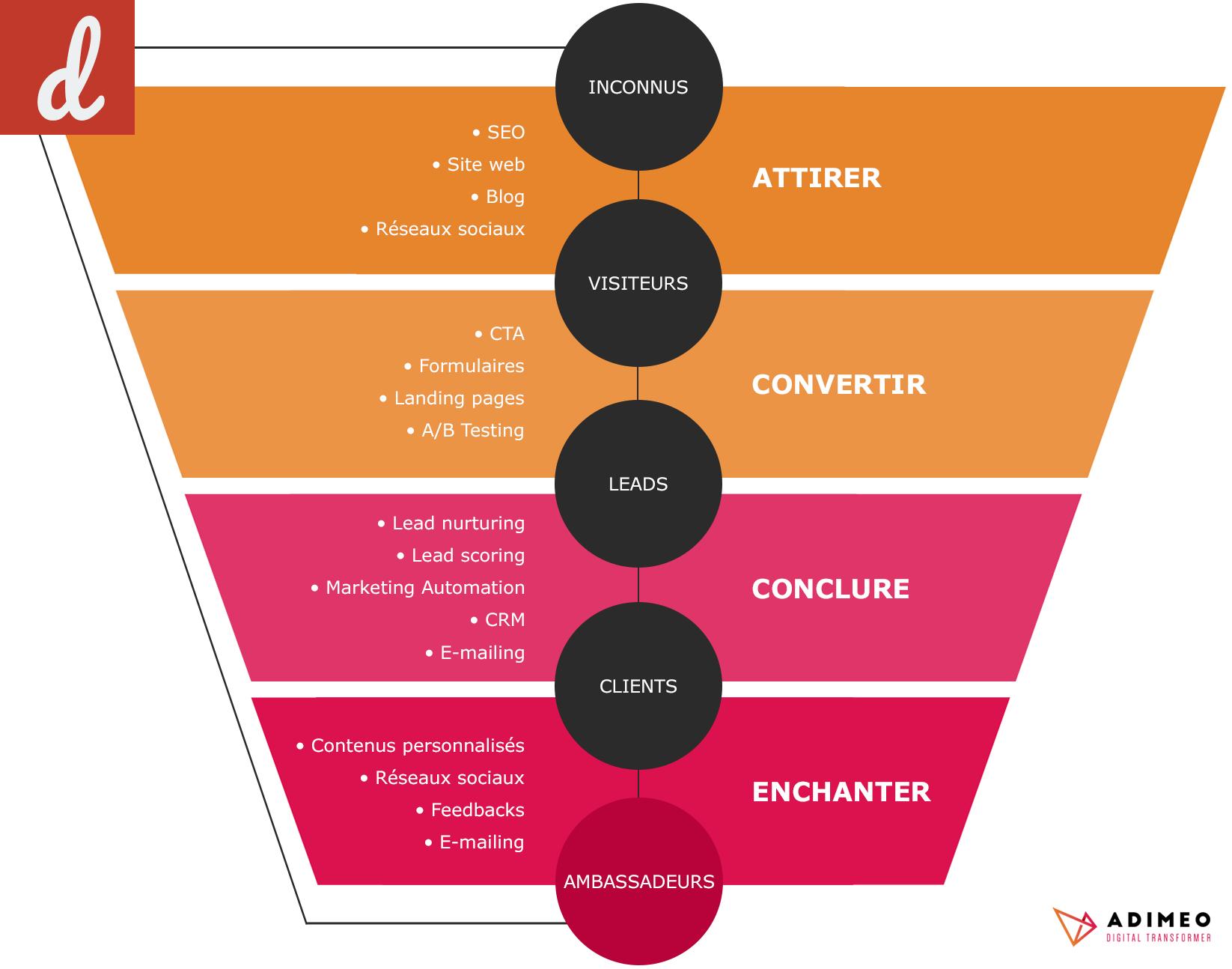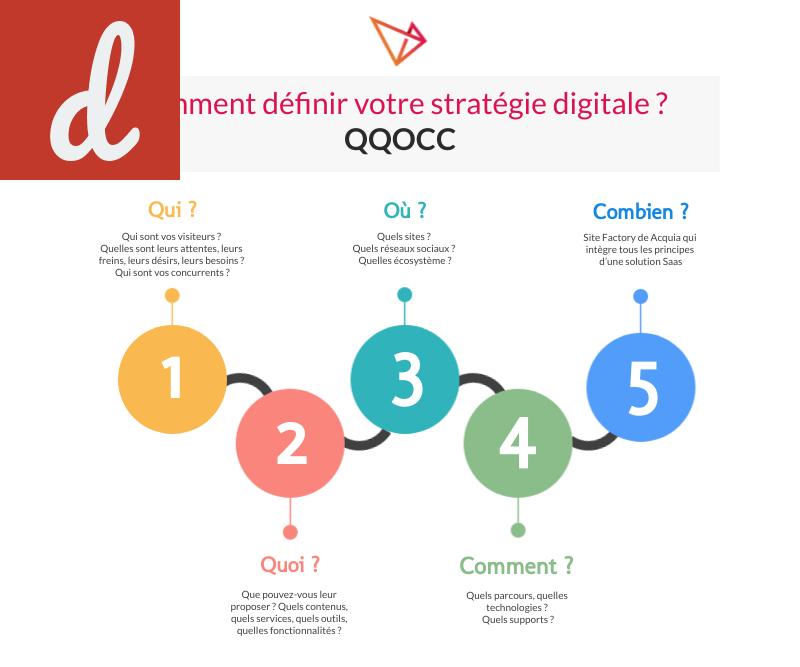5 Steps to Set Up a Digital Marketing Platform
In today's digital age, having a well-established online presence is essential for businesses. To reach and engage with your target audience effectively, setting up a digital marketing platform is crucial. Whether you are a startup or an established company looking to expand your online reach, here are five steps to get you started.
- Step 1: Define your goals and target audience
- Step 2: Create a user-friendly website
- Step 3: Craft a content strategy
- Step 4: Leverage social media platforms
- Step 5: Monitor and analyze your digital marketing efforts
Before diving into the world of digital marketing, it is important to clearly define your goals and understand your target audience. Consider what you want to achieve through your digital marketing efforts. Whether it is to increase brand awareness, generate leads, or drive sales, having a clear set of goals will help you shape your digital marketing strategy.
Your website is the online face of your business. It is crucial to have a user-friendly and visually appealing website that reflects your brand. Make sure your website is easy to navigate, loads quickly, and is mobile-friendly. Optimize your website for search engines by incorporating relevant keywords and creating quality content.
Content is the backbone of any successful digital marketing platform. Develop a content strategy that focuses on providing value to your target audience. Create engaging blog posts, videos, infographics, and social media posts that educate and entertain your audience. Incorporate your target keywords naturally throughout your content to improve your website's visibility in search engine rankings.
Social media platforms are powerful tools for reaching and engaging with your target audience. Identify the platforms where your target audience is most active and create a presence there. Develop a social media strategy that includes regular posting, engaging with your audience, and running targeted ad campaigns. Use social media analytics to measure the success of your campaigns and make necessary adjustments.
To ensure the effectiveness of your digital marketing efforts, it is important to monitor and analyze your results. Use analytics tools to track website traffic, conversion rates, social media engagement, and other relevant metrics. This data will help you identify areas for improvement and make data-driven decisions to optimize your digital marketing strategy.
Setting up a digital marketing platform may seem overwhelming at first, but by following these five steps, you can establish a strong online presence and reach your target audience effectively. Remember, digital marketing is an ongoing process, so be prepared to adapt and refine your strategy as you go.
How to Create a Digital Marketing Platform in 5 Easy Steps
In today's digital age, having a strong online presence is essential for businesses to succeed. One of the key ways to achieve this is by creating a digital marketing platform. A digital marketing platform is a centralized system that allows businesses to manage and execute their online marketing campaigns effectively. If you're looking to create your own digital marketing platform, here are five easy steps to get you started:
Step 1: Define Your Goals
Before you start building your digital marketing platform, it's important to understand your objectives. Clearly define what you want to achieve through your platform, whether it's to increase brand awareness, drive traffic to your website or generate leads. Having a clear set of goals will help you stay focused and create a platform that aligns with your business objectives.
Step 2: Choose the Right Tools
To create a successful digital marketing platform, you need the right set of tools. Look for tools that cater to your specific needs, such as email marketing software, social media management tools, analytics platforms, and content management systems. It's important to choose tools that integrate well with each other and offer the features you require.
- Email marketing software
- Social media management tools
Step 3: Develop a User-Friendly Website
Your website is the foundation of your digital marketing platform. It's important to have a well-designed and user-friendly website that reflects your brand and values. Make sure your website is mobile-friendly, loads quickly, and has clear navigation. Optimize your website for search engines by using relevant keywords throughout your content and improving the website's speed and performance.
Step 4: Create Engaging Content
High-quality content is crucial for attracting and engaging your target audience. Develop a content strategy that caters to your audience's needs and interests. Create informative blog posts, compelling videos, and visually appealing infographics. Share your content on social media platforms and encourage your audience to interact and share. The more engaging your content is, the more it will help to build your digital marketing platform.
Step 5: Analyze and Optimize
No digital marketing platform is complete without analyzing the performance of your campaigns and making necessary optimizations. Use analytics tools to track key metrics such as website traffic, conversion rates, and social media engagement. Analyze the data to identify what's working and what's not. Make data-driven decisions to optimize your campaigns and improve your overall digital marketing platform performance.
Creating a digital marketing platform takes time and effort, but by following these five easy steps, you'll be well on your way to building a strong online presence for your business. Remember to set clear goals, choose the right tools, create user-friendly content, and consistently analyze and optimize your campaigns for maximum results.
Building a Successful Digital Marketing Platform: 5 Key Steps
When it comes to growing your business in today's digital age, having a successful digital marketing platform is crucial. With the right strategy, you can attract and engage your target audience, increase brand awareness, and drive more sales. But how do you build a digital marketing platform that delivers results? Here are 5 key steps to get you started:
1. Define Your Goals
Before you dive into creating a digital marketing platform, it's important to define your goals. What do you want to achieve with your online marketing efforts? Is it to increase website traffic, generate more leads, or boost sales? By clearly outlining your goals, you can tailor your digital marketing strategy to achieve them.
2. Know Your Target Audience
Understanding your target audience is crucial for digital marketing success. Who are your ideal customers? What are their needs, preferences, and pain points? Conducting market research and creating detailed buyer personas can help you gain valuable insights that will inform your digital marketing strategy.
- List item 1: Conduct market research to identify your target audience
- List item 2: Create buyer personas to understand your customers better
3. Develop a Comprehensive Content Strategy
Content is at the core of any successful digital marketing platform. Developing a comprehensive content strategy is essential for attracting and engaging your target audience. This strategy should include creating high-quality, relevant, and valuable content such as blog posts, videos, social media posts, and email newsletters.
4. Optimize Your Website for Search Engines
Search engine optimization (SEO) plays a critical role in driving organic traffic to your website. By optimizing your website for relevant keywords, improving site speed, and enhancing user experience, you can improve your search engine rankings and attract more visitors.
5. Monitor and Analyze Your Results
To ensure the success of your digital marketing platform, it's important to monitor and analyze your results regularly. Use analytics tools to track key metrics such as website traffic, conversion rates, and engagement levels. This data will help you understand what's working and what needs improvement, allowing you to continuously refine your digital marketing strategy.
By following these 5 key steps, you can build a successful digital marketing platform that drives real results for your business. Define your goals, understand your target audience, develop a comprehensive content strategy, optimize your website for search engines, and monitor your results to continually improve and grow your online presence.

Main Title
Are you looking to establish a strong digital marketing platform for your business? With the ever-changing landscape of technology and the increasing importance of online presence, it is crucial to have a robust digital marketing strategy in place. In this step-by-step guide, we will walk you through the process of setting up and managing a successful digital marketing platform.
1. Define Your Objectives
The first step in establishing a digital marketing platform is to define your objectives. What are you trying to achieve through your digital marketing efforts? Whether it is increasing brand awareness, driving website traffic, generating leads, or increasing sales, it is important to have a clear understanding of your goals.
2. Research and Identify Your Target Audience
Knowing your target audience is crucial for effective digital marketing. Conduct thorough research to identify who your target audience is, what they are looking for, and where they spend their time online. This will help you tailor your marketing messages and choose the right channels to reach your audience.
- List item 1: Conduct customer surveys and interviews to gather insights.
- List item 2: Analyze website analytics and social media data to understand your current audience.
3. Develop a Comprehensive Content Strategy
Content is king in digital marketing. Create a content strategy that aligns with your objectives and resonates with your target audience. Develop a content calendar to plan out your content creation and distribution. Remember to create a mix of different types of content, including blog articles, videos, infographics, and social media posts.
4. Choose the Right Digital Marketing Channels
There are various digital marketing channels available, such as search engine optimization (SEO), social media marketing, email marketing, and pay-per-click (PPC) advertising. It is important to choose the right channels that will help you reach your target audience effectively. Consider your budget, target audience, and the objectives you have defined.
5. Optimize Your Website for Search Engines
SEO plays a critical role in attracting organic traffic to your website. Optimize your website by using relevant keywords in your website's content, meta tags, and page titles. Improve your website's loading speed, make it mobile-friendly, and create high-quality backlinks to boost its visibility on search engines.
6. Leverage Social Media Platforms
Social media platforms are a powerful tool for digital marketing. Create social media profiles for your business on platforms that align with your target audience. Develop a social media strategy, post engaging content regularly, and interact with your followers. Use paid advertising options on social media platforms to extend your reach.
7. Implement Email Marketing Campaigns
Email marketing is an effective way to nurture leads and keep in touch with your audience. Build an email list by offering valuable content and incentives in exchange for email addresses. Segment your email list based on user behavior and preferences. Create personalized email campaigns to send targeted messages to different segments.
8. Analyze and Measure Results
Regularly analyze and measure the results of your digital marketing efforts. Use tools like Google Analytics to track website traffic, user behavior, and conversions. Monitor key performance indicators (KPIs) such as click-through rates, conversion rates, and return on investment (ROI). Use these insights to optimize your strategies and improve your results.
In conclusion, establishing a digital marketing platform requires careful planning and execution. By defining your objectives, understanding your target audience, developing a content strategy, choosing the right channels, optimizing your website, leveraging social media, implementing email marketing, and analyzing your results, you can set up a successful digital marketing platform that will help you achieve your business goals.
Main Title: Essential Steps for Implementing a Digital Marketing Platform
Nowadays, digital marketing has become a vital component for businesses to thrive and grow in the online world. With the increasing competition, it's crucial to have a well-defined digital marketing strategy in place. A key aspect of this strategy is implementing a digital marketing platform that helps streamline and optimize your marketing efforts. In this article, we will discuss the essential steps for successfully implementing a digital marketing platform.
First and foremost, it is important to conduct a thorough evaluation of your current marketing processes and identify the gaps that need to be addressed. This evaluation will give you a clear understanding of what you want to achieve with the digital marketing platform. Determine your overall goals and objectives, and align them with the capabilities of the platform you choose.
- List item 1: Identify your marketing goals and objectives
- List item 2: Evaluate your current marketing processes
Once you have a clear roadmap in place, the next step is to research and select the right digital marketing platform for your business. Consider the features and functionality that are essential for your specific needs. Look for a platform that offers a comprehensive suite of tools for various aspects of digital marketing, such as email marketing, social media management, SEO optimization, and analytics. It is also important to ensure that the platform can seamlessly integrate with your existing systems.
After selecting the platform, the next step is to set it up and configure it according to your requirements. This process may involve tasks such as creating user accounts, defining access levels, and integrating with third-party applications. It is important to thoroughly test the platform before deploying it to ensure that everything is working smoothly.
Once the platform is set up, it's time to develop a content strategy and start creating and publishing content. A well-planned content strategy is crucial for engaging your target audience and driving traffic to your website. Use the digital marketing platform to schedule and automate content distribution across different channels, such as social media, email newsletters, and blog posts.
Another important aspect of implementing a digital marketing platform is tracking and measuring the performance of your marketing campaigns. Use the platform's analytics tools to gather data and insights on various metrics, such as website traffic, conversion rates, and customer engagement. Analyze this data to understand what is working well and what needs improvement.
Lastly, ongoing training and support are essential for the successful implementation of a digital marketing platform. Make sure to provide your team with the necessary training to leverage the platform's full potential. Additionally, seek assistance from the platform's support team whenever needed, ensuring that you always have access to guidance and troubleshooting.
In conclusion, implementing a digital marketing platform is a crucial step for businesses looking to enhance their online presence and drive growth. By following these essential steps, you can ensure a smooth and successful implementation process. Identify your goals, choose the right platform, set it up and configure it correctly, develop a content strategy, track and measure performance, and provide ongoing training and support. With a well-implemented digital marketing platform, you can effectively reach and engage your target audience, ultimately driving success for your business.


Dec 18, 2023 Alex Matt says :
Merci beaucoup pour ce blog intéressant sur la mise en place d'une plateforme de marketing digital. J'ai vraiment apprécié la clarté des étapes que vous avez décrites. C'est essentiel pour toute entreprise qui souhaite améliorer sa présence en ligne et atteindre son public cible de manière efficace. Je suis impatient d'appliquer ces conseils pour mon projet de marketing digital. Encore une fois, merci! Benefits Of Using Digital Marketing Platforms For Small Businesses